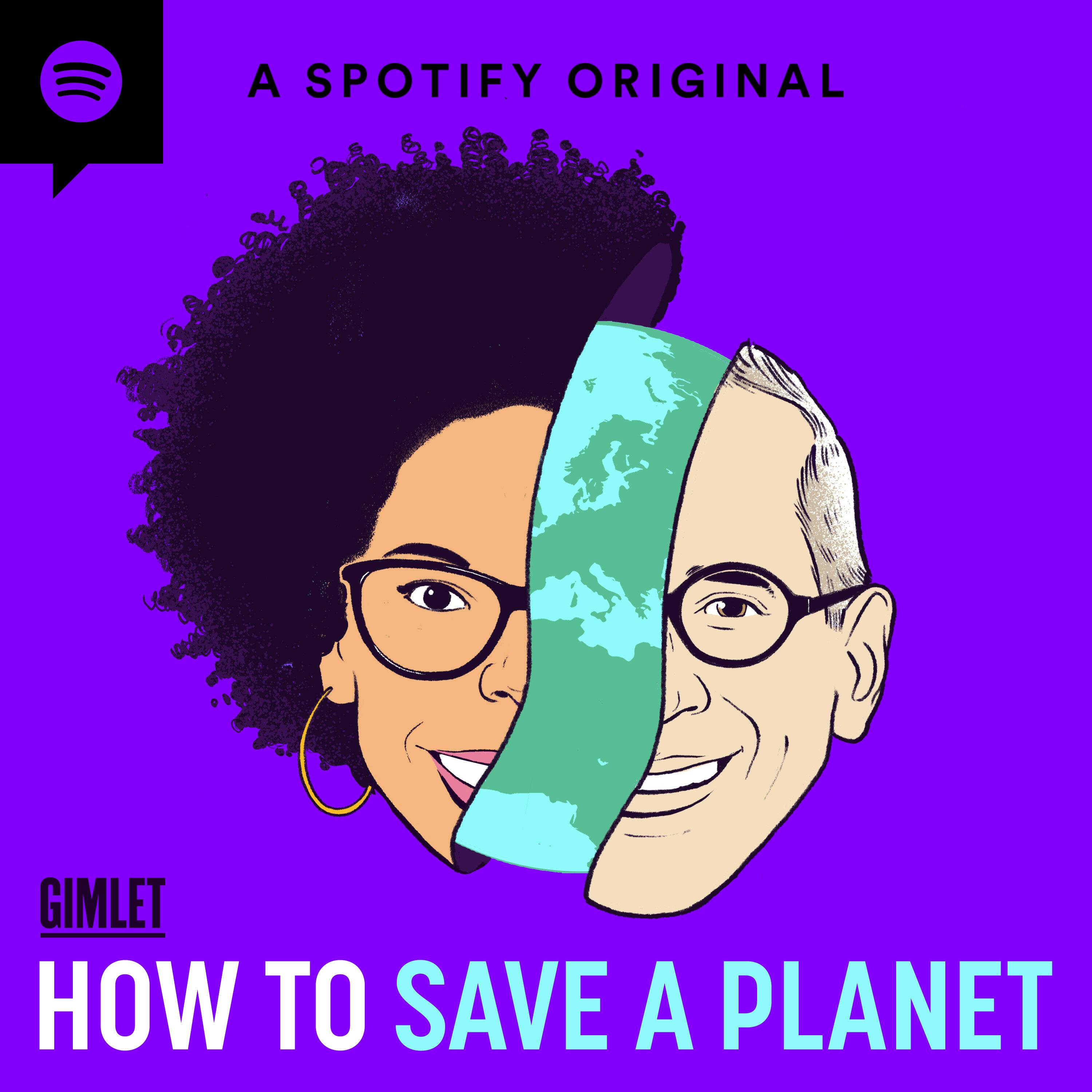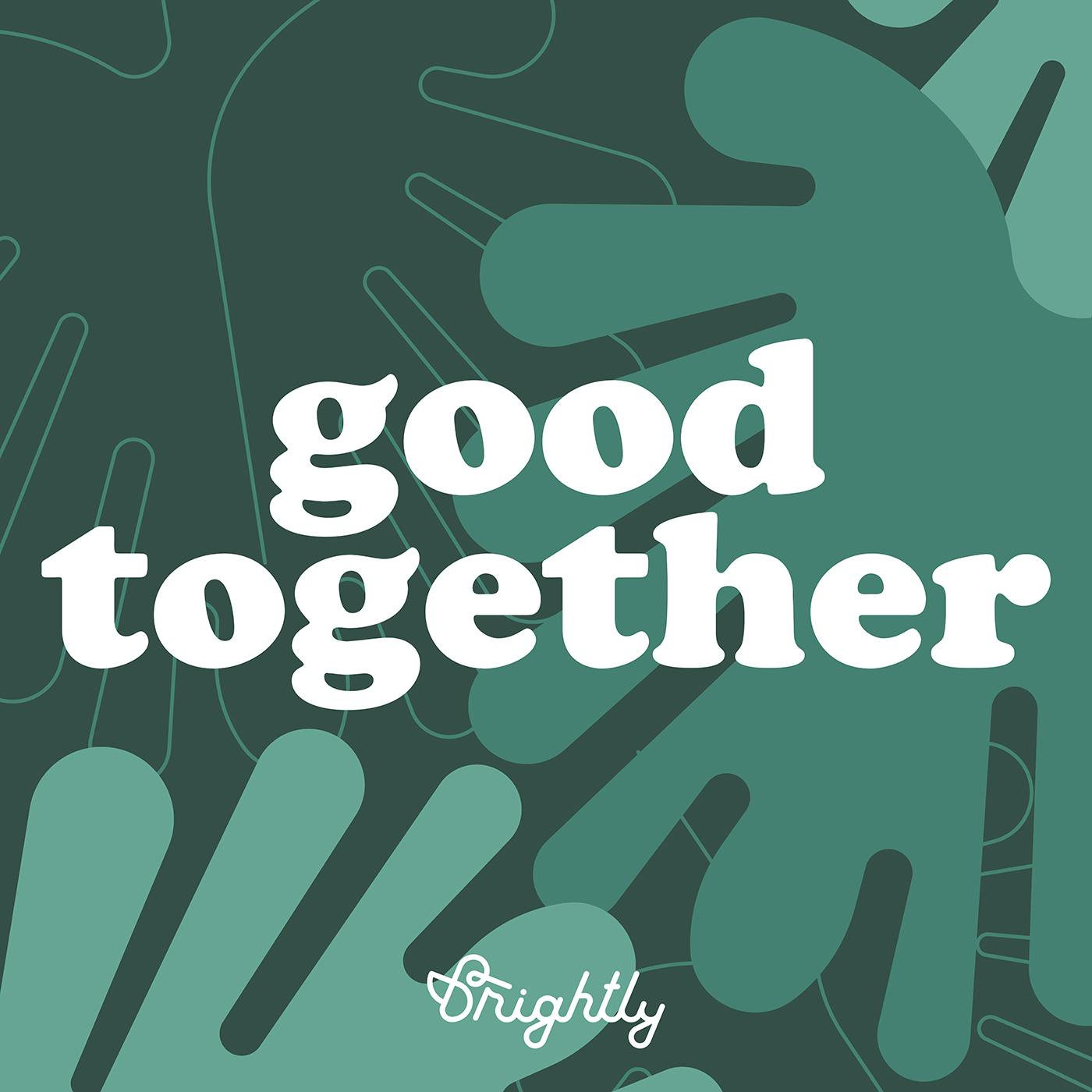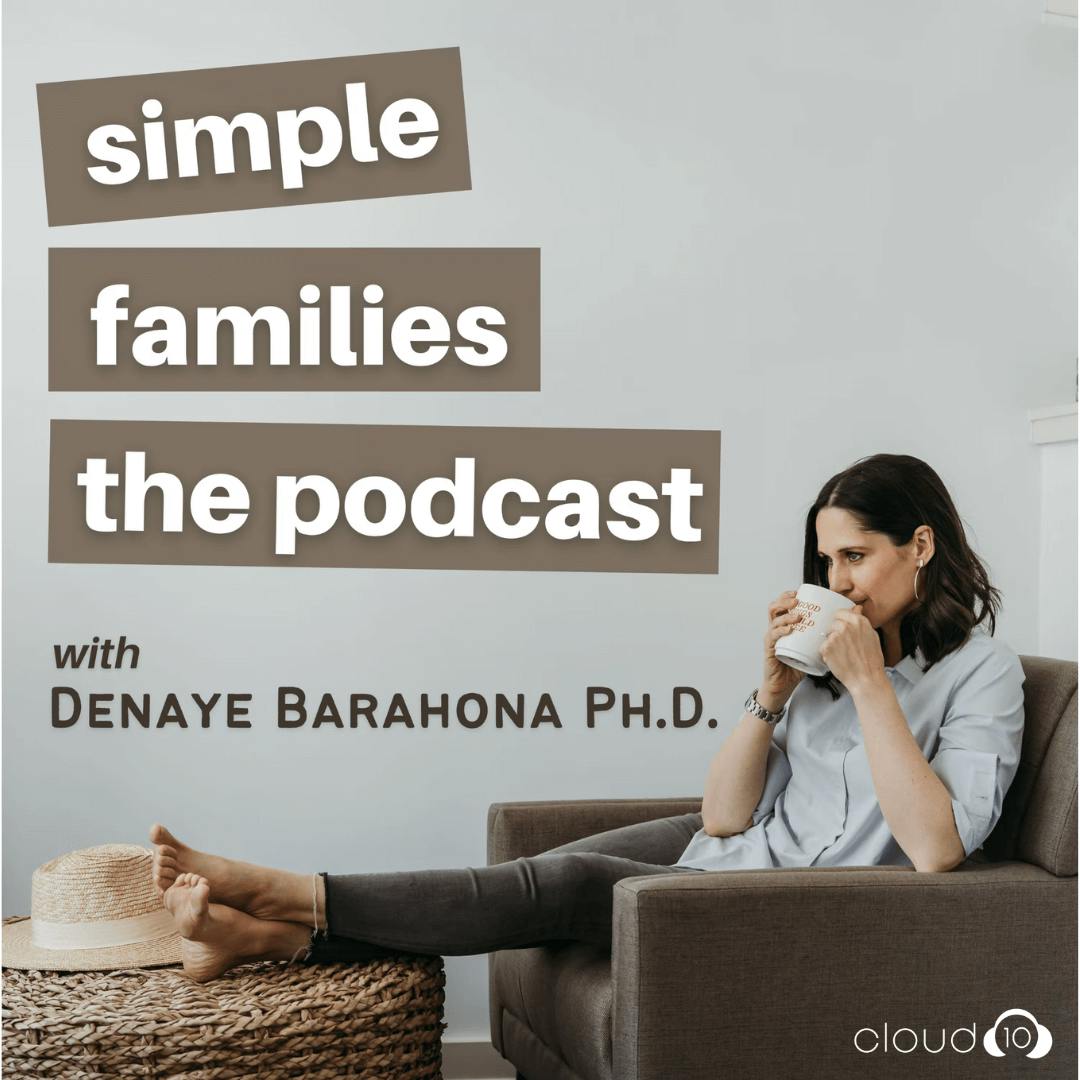
Sustainable in the Suburbs
Want to waste less, save more, and make your home a little more eco-friendly? Sustainable in the Suburbs is your go-to podcast for practical, judgment-free tips and real-life stories to help you build sustainable habits that actually stick.
Hosted by Sarah Robertson-Barnes — a suburban soccer mum, sustainability educator, and founder of the blog Sustainable in the Suburbs — this weekly show brings doable advice, honest conversations, and actionable ideas to help you waste less, spend smarter, and live more sustainably at home.
Because sustainable living doesn’t have to be perfect to matter — and you don’t have to do it all to make a big impact.
Start where you are, use what you have, and live a little greener.
Sustainable in the Suburbs
18: Connecting Communities Through Green Spaces with Carolyn Scotchmer
“The best time to plant a tree was 20 years ago. The second best time is now.” Green spaces strengthen our neighbourhoods, connecting us to nature and to each other.
In this episode, I’m joined by Carolyn Scotchmer, Executive Director of TD Friends of the Environment Foundation (TD FEF). Carolyn has spent more than a decade supporting community development through urban greening and community gardening initiatives across Canada. Today, she leads TD FEF’s national granting programs — including TD Tree Days, which for the past 15 years has brought families, volunteers, municipalities, not-for-profits, and Indigenous communities together to plant over half a million trees and help create healthier, more connected neighbourhoods.
Takeaways
- What it means to build a career rooted in environmental stewardship and community impact
- How green spaces support health, well-being, biodiversity, and community resilience
- How collaborations between corporations, not-for-profits, municipalities, and Indigenous communities bring projects like TD Tree Days to life
- The joy of volunteering together — a fun, hands-on way to build connections with neighbours, family, and the nature that surrounds us
Resources
TD Friends of the Environment Foundation
Connect With Me
Sustainable in the Suburbs is mixed and edited by Cardinal Studio
If you enjoyed this episode, I’d love it if you followed the show, shared it with a friend, or left a rating and review. Every little bit helps more people find Sustainable in the Suburbs — and live a little greener.
The best time to plant a tree was 20 years ago. The second best time is now. In this episode, we're talking about what happens when families, volunteers, and community partners come together to grow greener, healthier neighborhoods. Welcome to Sustainable in the Suburbs, a podcast for the eco-curious who want to live a greener life and are looking for a place to start. I'm your host, Sarah Robertson Barnes, a soccer mom with a station wagon and a passion for sustainable living. Each week I'll bring you practical tips and honest conversations to help you waste less, save money and make small doable shifts that actually fit your real life. Because sustainable living doesn't have to be perfect to matter and you don't have to do it all to make a difference. Hello, welcome back to Sustainable in the Suburbs, the podcast where we start where we are, use what we have and live a little greener, one small shift at a time. My name is Sarah Robertson Barnes and I'm so glad you're here today. If you've been enjoying the podcast and want to help grow our little eco community, there are a few quick and easy things you can do. Make sure you're following the show and leave a rating and review wherever you're listening today. Definitely come hang out with me on Instagram. You can find me there at Sarah Robertson Barnes and don't be afraid to slide into my DMs. I love to hear what's resonating with you or what you might like to hear on the show. And be sure to check out the link in the show notes for my blog, get on the newsletter, all that good stuff. Every bit of support makes a difference and it truly means the world to me. In today's episode, we're exploring why green spaces matter so much. Not just for the environment, but for our health, our neighborhoods, and our sense of connection to each other. Tree planting initiatives are a simple but powerful climate action we can see and feel in our communities. And they're often made possible through partnerships between corporations, local organizations, municipalities, Indigenous communities, and conservation authorities. My guest today is Carolyn Scotchmer, the Executive Director of TD Friends of the Environment. Carolyn oversees the Foundation's operations and leads a team that delivers granting programs to support environmental initiatives across Canada. She also leads TD's signature programs like TD Tree Days, which for the past 15 years has brought families, volunteers, and community partners together to plant trees and revitalize green spaces across the country. Before joining TD, she spent over a decade working with community organizations on urban greening and community garden projects. And she continues to serve on boards and alliances that focus on the role of nature in building healthier cities. Here's my conversation with Carolyn. Carolyn, welcome to Sustainable in the Suburbs. I am so pleased to be chatting with you today. And I'm excited to be here. So I'd love to start with you. Can you tell us a little bit about your journey and what brought you into this work in environmental stewardship? So, I mean, I've always been interested in nature. Even when I was a kid, I was always out playing in the dirt. And as I went through school and got into university, it became apparent to me that this was actually a career people could have. So I went to school, did a degree in biology, focusing on ecology, uh did a master's in environmental studies and the I learned the more I wanted to know. So it just was a fantastic option to realize there were careers where I could be out in natural spaces, helping to promote natural spaces and support that side of the world. And so currently you are the executive director of the TD Friends of the Environment Foundation and you're leading projects that connect directly to communities. So what drew you to that kind of locally focused environmental work? So my career has always been really focused locally and uh starting when I finished school, my first career related job was actually uh carrying out like planning and implementing community based restoration projects in green spaces. So uh just really having that experience early on and understanding the impact that that can have both on the environment and on community. And I also think you know, looking at conservation and ecology through school and my other experiences. For me anyway, it became very apparent very quickly that while we really do need to be thinking about it at a global level, the change comes locally. And even in ecology, you know, we talk about global ecosystems and, you know, global species, but everything's adapted hyper local and it just it seems to be reflected through everything that I end up doing. The old saying, act locally. Yeah, it really is. It's, you know, a little bit cliche for a reason. So you've spoken about the importance of green spaces and let's dig into that a little bit more. How do green spaces support like healthy and thriving communities? So, mean, green spaces aren't just about trees and parks. They're where communities come alive. It's where we connect with each other. It's where we connect with nature. And there's more and more studies that are showing that nature can support and facilitate health and wellbeing. You know, gives us a space for physical activity. It also gives us a space for social interaction and to build cohesive communities. And we're still figuring out why exactly a lot of those mental and physical health benefits happen. But at the end of the day, for a lot of people, think, with or without, you know, the research to quote, it feels intuitive. When I spend time in green spaces and nature, I feel better, I feel stronger, I meet my neighbors, and I feel like part of the community. And that work is so important. And also, you know, historically, not everyone has felt included in that in welcoming green spaces. So a lot of the work that we focus on and we support is also focused on reducing barriers to widespread involvement. So, so everybody can get out there and use the spaces in ways that make them feel better. From an environmental angle, what role do green spaces play in making our communities, our towns, our cities more resilient? I mean, there's, there's so many possible answers to this question. And, you know, at from a climate perspective, our green spaces are increasingly important in mitigating heat islands at providing shade, both reducing urban temperatures and also giving a place for people to go who maybe don't have the air conditioning or other ways to escape the heat. increasing storm events like you know, we seem to be having 100 year storm events every two or three years, it feels like at this point. You know, our green spaces are critical in absorbing water and providing the water with a place to go. It's not just running over the pavement and into the nearest water body. So that's really important. And from a biodiversity perspective, you know, it gives us local homes for all the many species, big and small that cause, you know, call our areas home. We like to think about the big, beautiful wilderness green spaces. And I'm big, as big a fan of those as anybody, but we have a lot of species that live in our cities. You know, I was just, I was just looking up the fact for this podcast today in terms of pollinators, there's 350 wild bee species in the GTA. So You know, we don't always see what's around us in terms of biodiversity, but green spaces, parks, natural areas really are critical habitat for the species that we need to be healthy. They are. One of the things that I do for volunteer work is I'm a nest box monitor for Birds Canada. And we have nest boxes all around Aurora where I live. have almost 300 boxes now. And a group of us, we monitor the cavity nesting birds in those areas. And so I can see on a firsthand level how maintaining our suburban canopy provides habitat for the chickadees and the tree swallows. and the house friends. We even had a pair of Eastern bluebirds a few years ago, which was the unicorn. We've been waiting over 20 years to see a breeding pair. And I've noticed that we have ash borer beetle here in Aurora. And so we are losing many of our mature trees and that is affecting the bird population. So really maintaining the health of that canopy is so important for wildlife and naturalization here in the GTA. So my family and I are signed up for a local TD tree days event this fall. We're gonna be going to the Bruce's Mill Conservation Area, which is a place I've been going to my whole life and now take my children to. We're very excited. So for listeners who may not be familiar, can you give us a sense of what the TD tree days program is all about? TD Tree Days is the flagship volunteer program of TD and TD Friends of the Environment Foundation. And it basically aims to provide colleagues, our friends, family, and the general public an opportunity to volunteer and help revitalize green spaces in their own communities through the planting of native trees and shrubs. Every year we work with a variety of organizations who support the on the ground planning and make sure that we are planting the right trees in the right place. I mean, you mentioned emerald ash borer, which is a huge issue. One of the things that the groups that we work with, municipalities, nonprofits are doing is figuring out how to diversify those species so they're less vulnerable when some of those pests do come along. So we work with those groups and Yeah, hold a series of tree planting events every fall. This year we're aiming to work with about 70 different organizations across Canada, planting about 30,000 native trees and shrubs, and there'll be thousands of volunteers working with us in communities to make that happen. What does a typical tree day event look like? So it's, you know, it's a fantastic event. you know, beautiful, I was going to say beautiful, sunny, they aren't all sunny. uh But yeah, we come out, we have TD site leaders at every site who coordinates with the organizations that we're working with on the ground and on the more technical pieces who help coordinate the volunteers on the day of who handle things like registration. You would come in. and our organizational support organizations. They will provide information on what we're planting. They're very familiar with the state, so they often give some information on the history, the ecology, and they provide a bit of a tutorial on how to plant a tree, how to be safe while you're doing it. We don't want any shovel accidents. you go just uh planting trees and shops. We tend to plant one to three gallon pots which are probably doesn't mean a lot to people who aren't in this but it's basically a manageable size so we're looking at more than seedlings because we want to give them really great advantage to get started but not so big that they're they're really difficult to manage and hard for volunteers to plant. And uh if we did on a couple of sites, we do have bigger things. But again, the organizations we work with are really helpful in making sure we have the tools we need to get it done. Local folks are such a wealth of knowledge. There's so much to learn. I love to nerd out at these events. this year marks the 15th anniversary of TD Tree Days. What kind of impact has this program had across Canada over those 15 years? Over the past 15 years, we've actually worked with over 40,000, 44,000 volunteers and community members to plant over 550,000 native trees and shrubs. it's such a collective effort. mean, it's amazing to see how every single event feeds into it. the larger picture. And honestly, I mean, I haven't been around for quite all the 15 years, but I've been around for most of them. And at this point, we can go back to sites that we did plant in those first couple years. And the difference is tremendous in terms of, you know, seeing, seeing in some cases a forest growing up on a site where there wasn't one before. You can really see the impact and feel it and sit in the shade of the tree that you planted. That's so special. Yeah, you really can at this point. It's amazing. I know these events bring together a lot of different people and organizations as well. So can you tell me about how these regional and strategic partnerships help to shape the program and really bring the events to life? So through the program, as I mentioned, we work with local nonprofits, municipalities, and Ontario Conservation Authorities. We also work with Indigenous communities. And we really rely on those groups to make sure that we're prioritizing the right projects. And as I said, planting right tree, right place. We have the resources and the people power to put behind these events, but without the organizations. to provide the guidance and the expertise we need to do it in a way that's truly impactful and responsible, we'd be a little bit lost. So they are certainly a critical piece of the puzzle. And our goal ultimately uh for all of the groups is really to support their priorities and the work that they've identified as needing to be done in their communities as opposed to coming in and sort of. pushing our own planning where we might not have the larger context. And volunteers are really at the heart of this work and these events. What makes their role so central to the success of TD Tree Days? We couldn't do it without them. To have people engaged in these kinds of projects, to be volunteering and getting their hands in the dirt, it obviously allows us to do a lot more than would otherwise be done. And also by working with communities to have these opportunities. It goes so far beyond three days because people come out to three days events and become really invested in the sites and interested in the long-term success of the site. you know, obviously critical to the day of the event, but their involvement and their impact goes a lot further than that. That's why I chose an event that's so close to my heart. used to run cross country at Bruce's mill, um, back when I was in public school and I've taken my, my own children there and it's such a treat to really put your hands in the dirt where you live. So over the years, you must have seen many meaningful moments like that. Is there a story from a past event that really captures the spirit of TD tree days for you? I mean, there's, there's many stories, but I mean, one of the things is, is that we really do value the volunteers that they come out year over year, we have families where, you know, we'll meet a kid at an event who's 10 and they have been to 10 TD tree days events and, to see that continuity. And also for me, there's something special about those events where you have people who have just not been involved before. Maybe it's their first event, who knows how they found it. They're bringing kids that have never picked up and used a shovel. And sometimes they're in parks that are five minutes from their house that they didn't even realize they're. So just that enthusiasm and that sense of discovery. And I remember one event in particular in Vaughan that we were working at. And in the middle of the event, I noticed a couple of kids pointing at me and I looked over and I had a praying mantis sitting on my shoulder. And I love praying mantises. um And so, you know, we had a conversation. They were super excited. They were super curious. This was the first time for many of them, they had ever even seen one. And it was just, you know, watching that enthusiasm and that curiosity and that excitement around it and you just know that when you put it all together, you know, for a lot of people, these moments become kind of core memories and how they connected with nature and how they first got involved and often it does spur long-term participation in all kinds of different ways. never look at a praying mantis the same way again. That's so special. So for any listeners who are curious about getting involved, what would be the best way for them to sign up or find a local TD Tree Day event? So all of our sites and events are listed on the TDTreeDays website, which is simply www.tdtreedays.com. So any events are on there. I do encourage people to check it out soon. We do fill up in some of the locations, but we've got lots going on right across the country. And I will definitely link that in the show notes. Make sure that you get out to an event. They are such a vibe. It's a great time. I went to one a few years ago and it was in a park, as you were just mentioning, and folks who lived around the park just came pouring out to see what was going on, what was everybody doing. And that just, that was really special. So I'm going to have to go back and visit that park and see how my trees are doing. TD Tree Days, what other opportunities are there for folks to engage with TD Friends of the Environment Foundation or support environmental initiatives in their own communities? So TD Friends and the Environment Foundation runs a granting program. And last year we funded 532 projects right across Canada. And a lot of those groups are running really fantastic volunteer activities and community events in their own communities. So, you know, there's always an opportunity to look up who's active in your community. do have a year in review that's on our website that lists some of the groups that we fund. But you know, Google activities in your community, if your municipality has an events calendar, if you're in Ontario, conservation authorities are often running tree plantings both in the spring and in the fall. So there are all kinds of ways in every community that you can get involved. And if you're not finding what you're looking for and there's a park down your street that you're just in love with, know, reach out to your municipality to see if there's anything going on or if there's an interest in starting something if there's not already something there. Yeah, the best time to plant a tree was 20 years ago. And the second best time is today. Exactly. So as we close, always like to end every show on this note. I'm going to put you on the spot a little bit. My segment is called One Small Shift, and it's all about how these small changes that we make in our lives really can make a difference. And yes, they count as climate action. So is there one small shift that you could encourage listeners to make in their own daily lives to feel more connected to nature or to support green spaces in their communities? So I think the one thing that really works for me is to take the time to appreciate the smaller moments. I can't always go to a Wogongwin or Banff or the big wide open wilderness spaces, or even spending a couple hours in the biggest park in my community. But nature is everywhere around us, as we were talking about, from the little to the big. taking the time every day to just stop and notice what you're seeing and to learn one new thing about the thing that you noticed on your walk home from work or in your backyard or on your balcony. um And it just adds up to so much over time. It really does. There's so much richness around us. Well, Carolyn, I thank you so much for your time today and for sharing your knowledge and your wisdom and all of the wonderful projects that you're working on. And I am so excited to be attending my TD Trees event on Sunday. I can't even stand it. So thank you so much again for your time today. Thank so much and I can't wait to see you at a tree planting event. If you'd like to get involved with TDTreeDays, you can find all of the details and sign up for a local event at tdtreedays.com. And I will link that down for you in the show notes. It's a really wonderful way to spend time outdoors, connect with your community and make a real lasting impact. And if you enjoyed today's episode, don't forget to subscribe to Sustainable in the Suburbs wherever you get your podcasts. You can always find more over at the website, which is just sustainableinthesuburbs.com. Thank you so much for listening today. Until next time, start where you are, use what you have, and live a little greener. Thanks for tuning in to Sustainable in the Suburbs. Every small step adds up and I'm so glad we're doing this together. If you enjoyed this episode, please make sure to follow the show, share it with a friend and leave a review wherever you get your podcasts. You can find me at sustainableinthesuburbs.com or at Sarah Robertson Barnes on all the things. Until next time, start where you are, use what you have and live a little greener.



![[OLD IMPORT] Green Dreamer: Seeding change towards collective healing, sustainability, regeneration Artwork](https://img.transistor.fm/Cu7NhHL7AkMmLzHdklSCPpCReUYOwJA3MsPaYf0GyVQ/rs:fill:0:0:1/w:1400/h:1400/q:60/mb:500000/aHR0cHM6Ly9pbWct/dXBsb2FkLXByb2R1/Y3Rpb24udHJhbnNp/c3Rvci5mbS9hZWY0/MTZkZjU2NTNmM2Ez/YzFmMjU1ODRhMzRk/YmE3ZC5wbmc.jpg)






